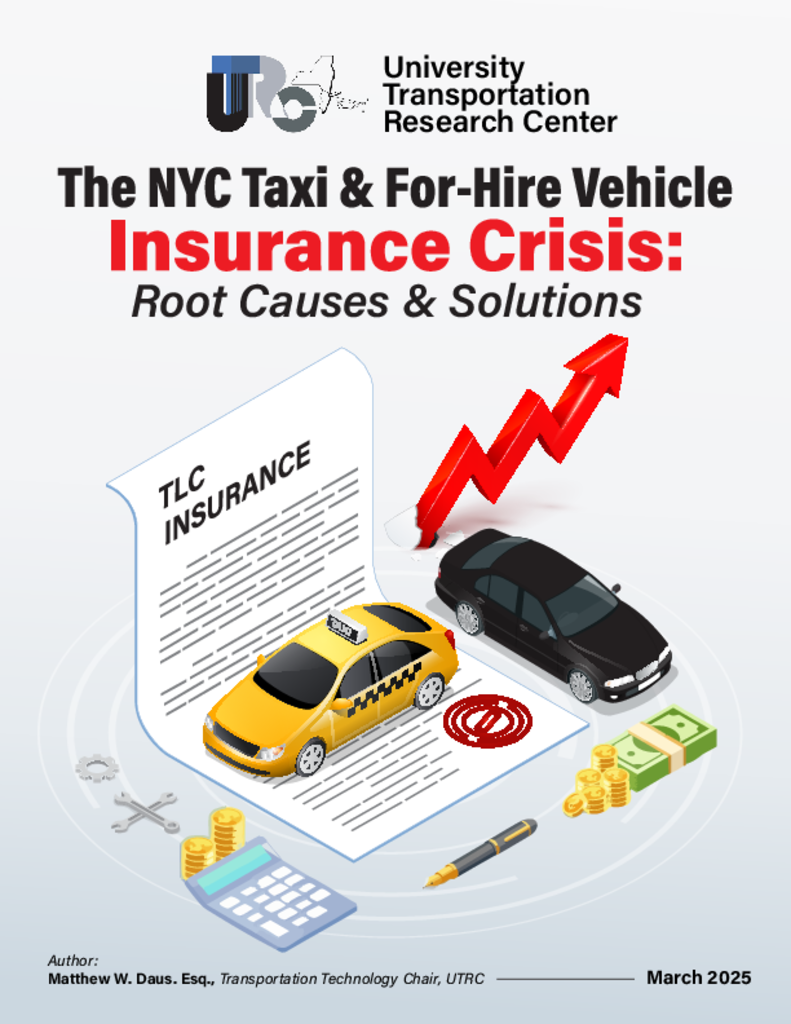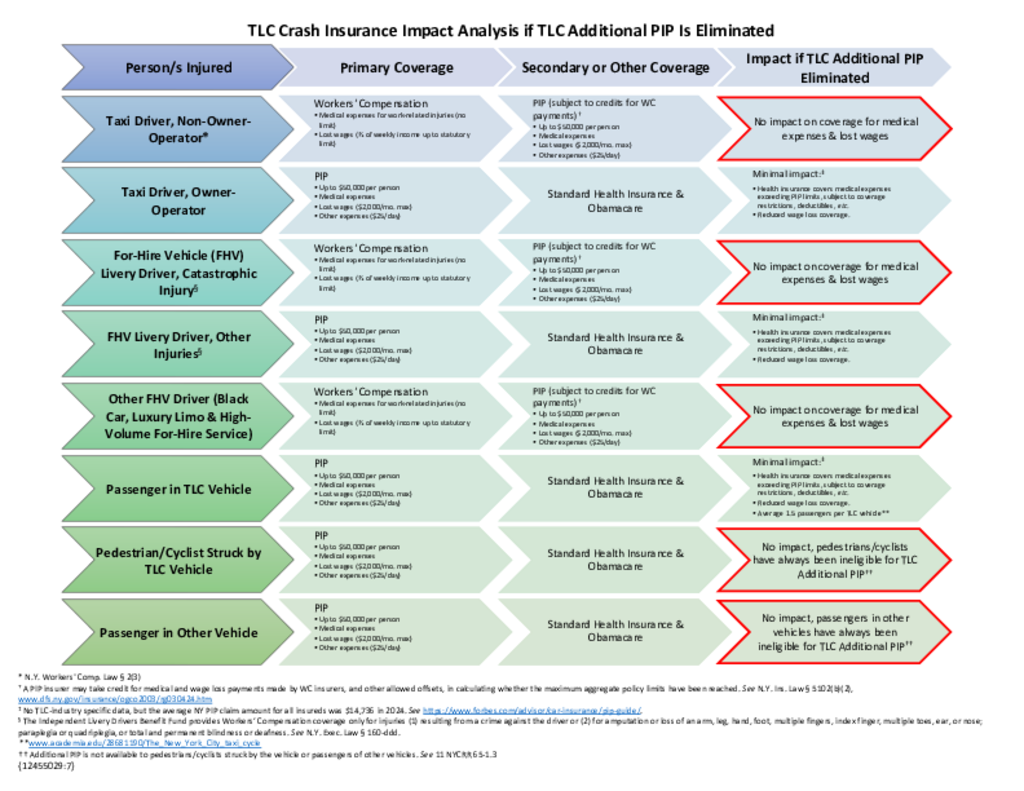The NYC taxi and for-hire vehicle (“FHV”) insurance crisis has reached a pivotal point, driven by high insurance premiums that threaten to price-out individual drivers and fleet owners and rooted in the $700 million insolvency of the New York City taxi and FHV market’s biggest insurer, American Transit Insurance Company (“ATIC”). This report seeks to identify the root causes of the crisis and propose actionable reforms to address the industry’s challenges.
The insolvency crisis at ATIC has been brewing for decades and is the result of several factors, including alleged long-standing financial mismanagement at ATIC, underpricing policies, and resistance to regulator intervention. ATIC’s insolvency is compounded by escalating claims and costs, the NYC Taxi and Limousine Commission’s (“TLC”) high minimum insurance
requirements, New York’s No-Fault (also called Personal Injury Protection or “PIP”) insurance law, and rampant insurance abuse and fraud. ATIC controls over 63% of the TLC insurancemarket, making it “too big to fail.” If ATIC goes under, tens of thousands of taxi and FHV owners may find themselves without an insurance carrier. This will destabilize the entire New York City transportation system on which so many depend.
An ATIC “bailout” is inevitable. At the end of December 2024, ATIC reported potential uncovered claims amounting to approximately $760 million – more than double the $300 million in the state’s two insurance security funds. New York State will ensure the payout of ATIC’s claims despite the company’s insolvency. However, as currently funded, New York’s insurance
safety nets will not support an ATIC crash. An insurance industry-funded bailout via an assessment would mean property and casualty insurance policyholders throughout New York will see their premiums rise. The other alternative is for the state to fund the rescue package, essentially impacting all taxpayers.
Determining how to structure an ATIC bailout and who should pay for it is complex and has no easy answers. However, people with no connection to New York City’s taxi and for-hire vehicle industry should not be forced to bail out a private company without anything in return. As New York State leaders contemplates the future of ATIC, it must also consider reform measures to attract new insurers to the market and lower insurance costs for the TLC industry. High insurance premiums have emerged as a significant challenge for taxi and FHV drivers and fleet owners. As of 2024, individual drivers faced annual insurance costs between $4,000 and $5,500, while fleet liability policies soared to $6,000–$9,000 annually per vehicle. These escalating costs have reduced driver earnings, ultimately diminishing the profession’s attractiveness and threatening the stability of the for-hire transportation market in New York City.
The report proposes short-term measures to provide immediate relief to the TLC-regulated industries and insurance companies and long-term measures to navigate through the crisis to a more stable future.





